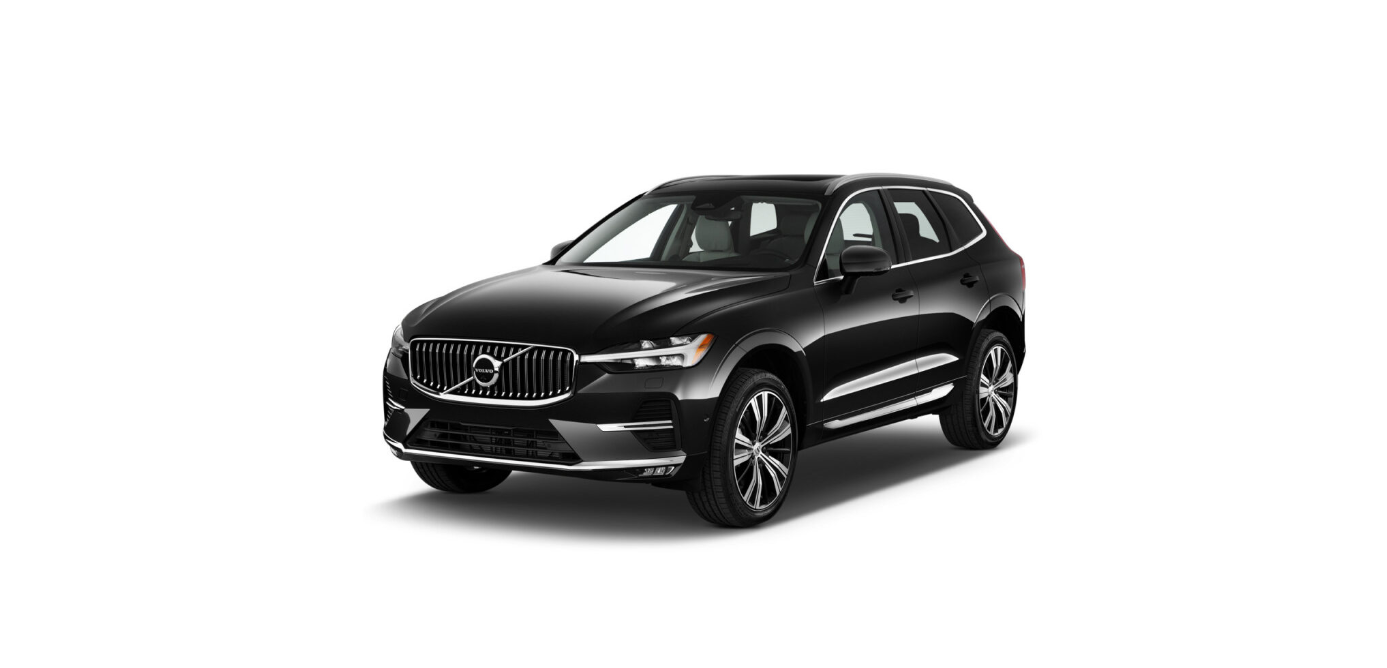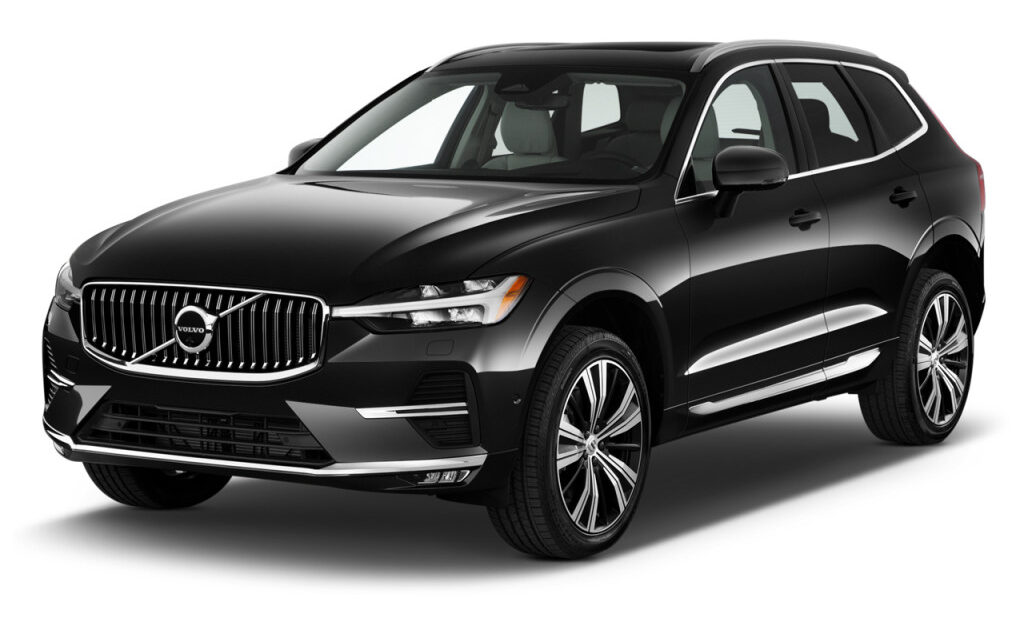Find out the statutory maximum speed limit for towing before the towing begins.
Important
Towing a car with a seven-speed gearbox is not permitted. Instead, the car must be transported raised with all the wheels on a recovery vehicle’s platform. Contact a Volvo dealer to determine what applies for your car.
Preparations and towing
Important
Some gearbox variants prevent shifting out of the P position unless the engine is running. Contact an authorised Volvo workshop for assistance when towing, or summon professional help for recovery.
Important
Note that the car must always be towed with the wheels rolling forward.
- Do not tow cars with automatic transmission at speeds higher than 80 km/h (50 mph) or for distances in excess of 80 km (50 miles).
Warning
- Check that the steering lock is unlocked before towing.
- Ignition position II must be active – in ignition position I all airbags are deactivated.
- Always keep the key in the car when it is being towed.
Warning
The brake servo and power steering do not work when the engine is switched off – the brake pedal needs to be depressed about 5 times more heavily and the steering is considerably heavier than normal.
- Activate the car’s hazard warning flashers.
- Secure the towline in the towing eye.
- Deactivate the steering lock by unlocking the car.
- Set the car in ignition position II – turn the start knob clockwise without depressing the brake pedal, and hold the knob in place for approx. 4 seconds. Then release the knob, which automatically returns to its starting position.
- Move the gear selector to neutral position and release the parking brake.
If the battery voltage is too low, the parking brake cannot be disengaged. Connect a donor battery if the battery voltage is too low.- The towing vehicle can now start towing.
- Keep the towline taut when the towing vehicle reduces speed by holding your foot gently pressed on the brake pedal – thereby avoiding unnecessary jerking.
- Be prepared to brake to stop.
Jump starting
Do not tow the car to jump start the engine. Use a donor battery if the starter battery is discharged and the engine does not start.
Important
The catalytic converter may be damaged during attempts to tow-start the engine.
Fitting and removing the towing eye
Use the towing eye for towing. The towing eye is screwed into a threaded socket behind a cover on the right-hand side of the bumper, front or rear.
Note
If the car is equipped with a towbar, there is no rear mounting for a towing eye.
Fitting the towing eye
- Take out the towing eye from the foam block under the floor in the cargo area.
- Front: Remove the cover – press on the marking with a finger.
- The cover pivots around its centre line and can then be removed.
- The cover pivots around its centre line and can then be removed.
- Rear: Remove the cover – press on the marking with a finger while you fold out the opposite side/corner.
- The cover pivots around its centre line and can then be removed.
- Screw in the towing eye until it reaches its end stop.
Screw the eye in firmly. For example, thread through the wheel bolt wrench and use it as a lever.
Important
It is important that the towing eye is firmly screwed into place – right in until it stops.
Points to remember before using the towing eye
- The towing eye may be used to pull the car up onto a recovery vehicle with a flatbed platform. The car’s position and ground clearance determine whether it is possible.
- If the slope of the recovery vehicle’s ramp is too steep, or if the ground clearance under the car is inadequate, then the car may be damaged if you try to pull it up using the towing eye.
- If necessary, raise the car by using the recovery vehicle’s lifting device. Do not use the towing eye.
Warning
No one/nothing is allowed to remain behind the recovery vehicle while the car pulled up onto the flatbed platform.
Important
The towing eye is only designed for towing on roads – not for pulling the car unstuck or out of a ditch. Call a recovery service for recovery assistance.
Removing the towing eye
Unscrew and remove the towing eye after use and return it to its foam block.
Finish by refitting the cover onto the bumper.
Recovery
For recovery, the car is taken away with the help of another vehicle.
Call a recovery service for recovery assistance.
The towing eye can be used to pull the car up onto a recovery vehicle with a flatbed platform.
If the car is equipped with air suspension, this must be disabled before the car is raised. Deactivating the function via the centre display.
- Press
- Select Driving.
- Select to activate or deactivate air suspension.
The car’s position and ground clearance determine whether it is possible to pull it up onto a flatbed platform. If the slope of the recovery vehicle’s ramp is too steep, or if the ground clearance under the car is inadequate, then the car may be damaged if you try to pull it up. The car should then be lifted using the recovery vehicle’s lifting device.
Warning
No one/nothing is allowed to remain behind the recovery vehicle while the car pulled up onto the flatbed platform.
Important
The towing eye is only designed for towing on roads – not for pulling the car unstuck or out of a ditch. Call a recovery service for recovery assistance.
Important
Note that the car must always be transported with the wheels rolling forward.
Cars with all-wheel drive recovered with front wheels raised must not be towed at a speed above 70 km/h (40 mph) or for a distance longer than 50 km (30 miles).
Safety mode
Safety mode is a protective state that is triggered when a collision may have damaged any of the car’s vital functions, such as the fuel lines, sensors for any of the safety systems, or the brake system.
If the car has been in a collision, the message Safety mode See Owner’s manual may be shown on the driver display with a warning symbol as long as the display is not damaged and the car’s electrical system is still in working order. This message means that the car has reduced functionality.
Warning
Never, under any circumstances, attempt to restart the car if it smells of fuel when the Safety mode See Owner’s manual message is shown in the driver display. Leave the car at once.
If the car is in safety mode, it is possible to attempt to reset the system in order to start and move the car for a short distance, if in a dangerous traffic situation for example.
Warning
Never attempt to repair your car or reset the electronics yourself if the car has been in safety mode. This could result in personal injury or the car not functioning as normal. Volvo recommends engaging an authorised Volvo workshop to check and restore the car to normal status after Safety mode See Owner’s manual has been shown.
Warning
If the car is in safety mode it must not be towed. It must be transported from its location. Volvo recommends that it is transported to an authorised Volvo workshop.
Starting and moving the car after safety mode
If the car is in safety mode, it is possible to attempt to reset the system in order to start and move the car for a short distance, if in a dangerous traffic situation for example.
Reset and start the car after safety mode
- Check the general damage situation of the car and whether any fuel has been leaking. There must be no smell of fuel either.
If there is only minor damage and a check has revealed no fuel leaks, starting can be attempted.
Warning
Never, under any circumstances, attempt to restart the car if it smells of fuel when the Safety mode See Owner’s manual message is shown in the driver display. Leave the car at once. - Switch off the car manually.
- Then try to start the car.
- The car’s electronics carry out a systems check and then try to resume normal status.
Important
If the message Safety mode See Owner’s manual is still shown on the display the car must not be driven or towed but a vehicle recovery service must then be used instead. Even if the car appears to be driveable, hidden damage may make the car impossible to control once moving.
Moving the car after safety mode
- If the driver display shows the message The car is now in normal mode after a start attempt, the car can be carefully moved if standing in a dangerous position.
- Do not move the car further than necessary.
Warning
If the car is in safety mode it must not be towed. It must be transported from its location. Volvo recommends that it is transported to an authorised Volvo workshop.




